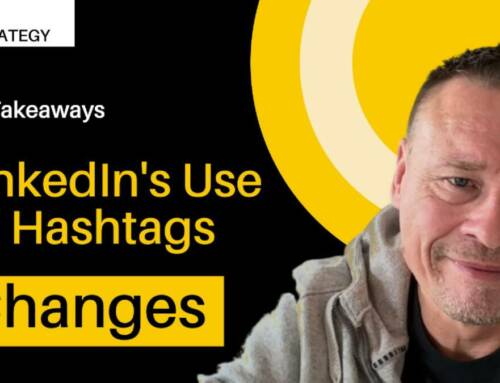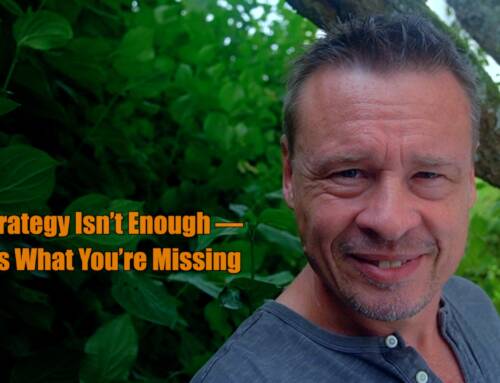Starting a new project can be both exciting and daunting at the same time. Whether it’s a personal passion project or a professional assignment, you want to make sure that it is successful and leaves a lasting impact.
Easier said than done. I know. Many factors are at stake when it comes to real project success.
In this article I’m focusing on implementing an official international development project, but the motivational component is pretty much the same.
From planning and execution to communication and stakeholder management, every aspect of a project requires careful attention. However, there are certain aspects that can really help you achieve project success — and not just any success, but success that can serve as a blueprint for other projects. These aspects are based on overall principles and have been used by successful project managers across industries and sectors.
So, if you want to set your project up for success, keep reading. These simple insights can help you achieve your project goals and create a case study that others can learn from.
Where’re we coming from?
In prior centuries, life was simpler for communities. Not necessarily better, mind you, but definitely simpler.
Communities had a shared purpose and vision, often tied to their survival and well-being. Development was often led by community members who knew what was best for their people. Nowadays, as societies have become more complex, the process of identifying and implementing effective development pathways has become increasingly challenging.
In many cases, the beneficiaries of development efforts are still effectively left out of the processes, leading to ineffective and unsustainable outcomes. It’s time for a shift in approach, one where the community members themselves become the organizers and decision-makers of development projects. By doing so, they can ensure that the projects align with their needs and goals, and lead to lasting positive change.
William Damon’s book, The Path to Purpose: Helping Our Children Find Their Calling in Life, offers insights that can be applied to this shift in approach — though I certainly don’t want to imply that grown-ups in developing scenarios were like children. The logic of motivation simply applies to everyone big or small. By focusing on the idea of purpose, we can empower community members to identify and pursue their own visions for the future.
On purpose
When it comes to international cooperation development projects, the ultimate goal is to benefit the people who will be impacted by them. Projects can vary greatly, but they should all be centered around making a positive impact on the lives of the so-called beneficiaries.
One key factor of successful development projects is having a clear purpose. This purpose should be meaningful and consequential for the beneficiaries — it should guide all decisions made throughout the project. Without a clear purpose, it can be difficult to know what actions to take and whether they are truly in service of the intended goals.
Once a purpose has been established, the organizers of the development project can begin working towards achieving their goals. This process can be transformative, both for the beneficiaries and for the organizers themselves. As the project progresses, beneficiaries may acquire new skills and qualities, such as resourcefulness, persistence, and tolerance for risk and setbacks. Meanwhile, the organizers may develop leadership skills, as well as a deeper understanding of the challenges faced by the communities they are serving.
It’s important to remember that international development projects are not about achieving a specific outcome, such as getting a certain number of people into law school. Instead, they are about making a positive impact on the lives of the beneficiaries. This impact can take many forms, such as improved health outcomes, increased economic opportunities, or greater access to education. By keeping the focus on the beneficiaries and their needs, organizers can ensure that their development projects are truly making a difference.
Having a clear purpose is conducive to developing traits and qualities that can benefit people in all areas of life as they struggle to get where they want to go. Devotion becomes resourcefulness. Resourcefulness becomes achievement. Achievement becomes self-confidence. Self-confidence becomes resilience.
Communities get exposed to tons of methods to get ahead. But what they need today are reasons. And when you have a reason, methods are the easy part.
That’s all very big picture. Yes. Some project leads are probably thinking, “Great, now how do I use this to improve access to education in my community?”
That’s the right perspective. You’re doing a great job of leading. Congrats on that. But remember, you’re not the sole leader here.
You’re a facilitator. And once you realize that, it gets much easier to empower your community to work together toward a common purpose.
“But I’m the project lead”
As a project lead, it can be tempting to impose your preferred approach on a community in order to achieve sustainable outcomes. Yeah, but simply imposing a development project without considering the needs and desires of the community is not an effective way to ensure long-term success. Even if you have conducted a needs assessment or used participatory methods to engage with the community, there may be political or economic factors that are not immediately apparent to an outsider. It’s important to remember that a community member’s “yes” may not actually indicate agreement, but rather a sign of respect or deference to authority. And, never mind, but clearly, interests in a community can shift much quicker than the bureaucratic sensory system of a regular development project is usually capable of detecting.
The reality of international development cooperation is that it is rife with systemic constraints, which can lead to a sense of disillusionment and loss of purpose among community members. To prevent this from happening, a truly participatory approach is necessary, where community members have a sense of ownership over the project. This approach can lead to greater community engagement, improved project outcomes, and long-term sustainability.
But how do you balance the need to provide guidance with allowing community members to take the lead?
It’s important to distinguish between strategy and tactics, meaning discuss the strategy but avoid “delivering the tools.” Drawing the big picture of the development initiative is important, but the community should be responsible for the implementation of the project. This may involve lengthy discussions and disagreements, but it’s important to remember that finding solutions is a process of talking and asking questions.
To truly empower a community, they need to develop problem-solving skills, self-control, and negotiation abilities. As a project lead, you need to start somewhere and provide opportunities for community members to develop these skills. This means being patient and accepting that sometimes the project may not happen if it is not feasible or if the community is not ready. By valuing the community’s feelings and opinions, you can create a project that truly benefits the community and creates a sense of ownership and long-term sustainability.
I know that many practitioners in international development cooperation are out here, saying the strategy of a project is set on its rails long before it arrives at the doorstep of a community. The partner and the donor country’s ministry negotiated this years before. It is sort of cast in iron in the sense that basic strategy is bound to certain budgetary requirements. Changing this would seriously jeopardize the flow of funds. However, this is not my subject here. Maybe my writing just shows one more time that one should not decide over people’s heads. Not in national politics and not in cooperation with international donors.
Collaboration
Collaboration is crucial when it comes to addressing issues with the community. Rather than responding to dissatisfaction with resistance, a proactive approach is needed to resolve issues before they escalate. Author Ross Greene’s three-step approach outlined in his book, The Explosive Child, is an effective method that can be adapted to the scenario of development cooperation.
The first step in this approach is empathy, which involves gathering additional information from the community to better understand their perspective on a given problem. Project organisers can start this step by using Greene’s magic formula: “I’ve noticed that…” followed by a description of the problem and the question “What’s going on?” It’s important to remain calm and gentle during this step and to avoid jumping to solutions. Instead, organisers should encourage community members to talk, ask questions, and clarify the issue.
The second step is defining the problem, which involves communicating the organisers’ concerns about the issue. Organisers can use the formula “The thing is…” followed by a description of their concerns to help community members understand how their individual sentiments affect others, especially within the community where there are different interests at play. This step also involves summarizing each other’s positions to ensure mutual understanding.
Finally, the third step is the invitation, where both organiser and community members collaborate to find a solution to the problem. Organisers can use the formula “I wonder if there’s a way we can…” followed by a description of how the community’s concerns can be addressed while still addressing the organisers’ concern. This approach encourages community members to take other people’s feelings into consideration when problem-solving. By giving the concerned community members the first opportunity to suggest a solution, organisers can foster empathy, problem-solving skills, and collaboration.
Using this three-step approach, organisers can help the community members develop valuable skills. By collaborating instead of imposing solutions, organisers can empower community members to become successful problem-solvers who take other people’s perspectives into consideration.
2 Criteria for Good Solutions in International Development
In order for any solution in development cooperation to work, it must meet two super important criteria:
- Realistic: The solution must be feasible and practical in the given context. It should be achievable with the resources and capacities available.
- Mutually satisfactory: The solution must address the concerns of all parties involved, including the community and the project organizers. It should be a win-win for everyone involved.
You think this is obvious? You’re right. But if you work in international development cooperation for only a little while, you become painfully aware of how easily even the most basic preconditions fall through the cracks during implementation. So it’s really worth it to mention them ever so often.
Now, how do you work with this?
When working with communities in international development, it is also critical to recognize that community members may not always have the necessary skills or experience to come up with realistic and mutually satisfactory solutions. Therefore, it is important to build their problem-solving and empathy muscles.
Rather than lecturing, development organizers can use a collaborative approach to problem-solving. When community members propose a solution that only addresses their concerns, the organizers can use Greene’s Magic Formula: “That’s an idea, and I know that idea would address your concern, but I don’t think it would address my concern. Let’s see if we can come up with an idea that will work for both of us.”
This approach encourages community members to consider the perspectives and concerns of others and to work together to find a solution that benefits everyone. If the first solution proposed is not realistic or mutually satisfactory, it is important to acknowledge this and work together to refine the solution.
By using this approach, development organizers can improve the relationship with the community and foster a collaborative environment where everyone’s concerns are taken into consideration. This will lead to more successful and sustainable solutions in the future.
NB: The article was created with support of chatgpt and the visual with DALL-E





Leave A Comment